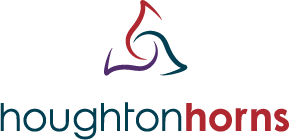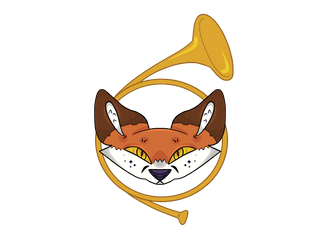
The reason the French horn is played with the bell facing backwards lies in the rich history and development of the instrument.
The horn was originally used as a signaling instrument, primarily employed in fox hunting expeditions. Hunting parties would assemble together on horseback at the beginning of the hunt, the leader being a hunt master. The hunt master would ride in front with a horn around his shoulder, bell facing backward. When he spied a fox or other prey he would blow a signal to let everyone else behind him know that an animal had been spotted. There were even specific horn calls for the different animals (ie. fox, boar, deer) and these early traditional hunting calls have been passed down through generations.

When the horn finally emerged from the world of hunting expeditions and entered the concert stage, instrument makers added more tubing, but the shape of the horn stayed basically the same. Also, by that time, players had begun to insert their right hand into the bell in order to alter the notes, a technique known as “hand-horn”. It made sense to keep the bell on the right side, facing backwards. This allowed the hornist to play a variety of chromatic notes on the horn using this technique. Eventually valves were added in the early nineteenth century, but the general shape and design of the horn remained close to the original early instruments.


Teri Turpen
Interesting.. my friend asked me the question tonight “Why do french horns face backwards” I told him we act as a monitor for the back of orchestra much as lead guitars need monitors.. in theory I guess I was close.. I haven’t played since high school and I am 55 but I loved that instrument and excelled at it!